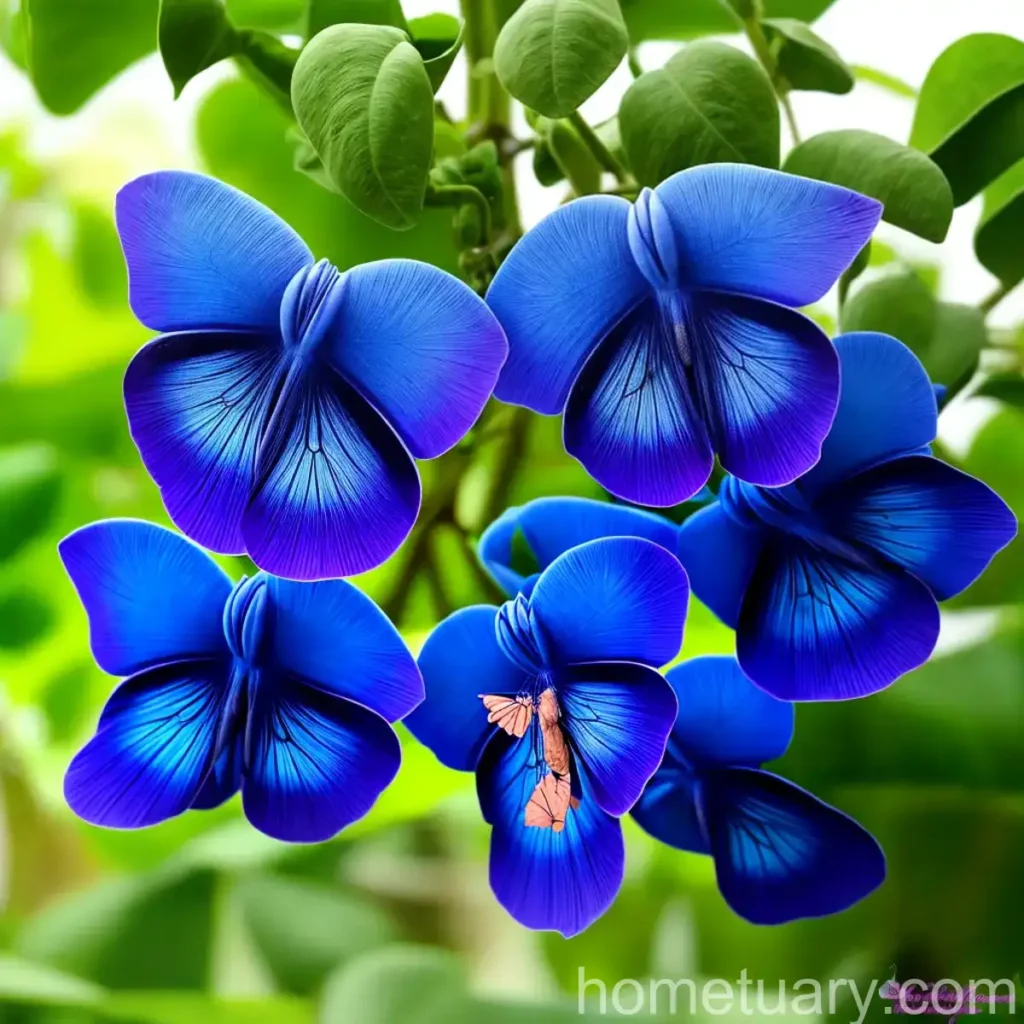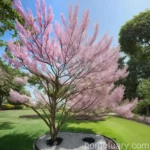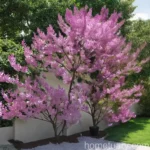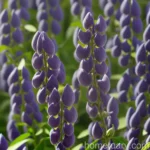The Butterfly Pea Plant (Clitoria ternatea): A Complete Guide
The butterfly pea plant (Clitoria ternatea) is an intricate and fascinating species that has gained attention and popularity due to its striking blue flowers and a multitude of cultural, culinary, and medicinal uses. Known for its vibrant and enchanting appearance, the butterfly pea plant is not only a sight to behold but also a valuable resource in various traditional practices and modern applications.
This comprehensive guide will delve into the diverse facets of the butterfly pea plant, from its cultural significance to its care and maintenance as a splendid addition to your garden or indoor space. We will explore its uses, preferred growing conditions, potential challenges, and ways to propagate this unique plant. Furthermore, we’ll uncover the benefits, fun facts, and interesting aspects that make this plant a standout in the botanical world.
What is the Butterfly Pea Plant (Clitoria ternatea)?
Butterfly pea, scientifically known as Clitoria ternatea, is a flowering plant species belonging to the Fabaceae family. Native to tropical and subtropical regions in Asia, the butterfly pea plant is renowned for its distinctive indigo-blue flowers, though some varieties also produce white and pink blossoms. The flowers are frequented by various pollinators, including butterflies, bees, and birds, hence its common name.
Key Takeaways – Butterfly Pea (Clitoria ternatea)
Before delving into the specifics of cultivating and caring for the butterfly pea plant, let’s quickly recap the key takeaways about this fascinating species, ensuring a comprehensive understanding of its various aspects.
Culture
- Native to tropical and subtropical regions in Asia
- Known for its striking indigo-blue flowers, with some varieties producing white and pink blossoms
- Attracts a variety of pollinators including butterflies, bees, and birds
Uses
- Culinary: Used to add vibrant, natural color to food and beverages
- Medicinal: Utilized in traditional medicine for its potential health benefits
- Cultural: Featured in various cultural and traditional practices
With these key takeaways in mind, we can now proceed to explore the detailed aspects of the butterfly pea plant, covering topics such as its preferred growing conditions, uses, potential challenges, and more.
Butterfly Pea Plant Care: Cultivating a Stunning Species
The butterfly pea plant, with its captivating flowers and versatile uses, has garnered attention from gardening enthusiasts, culinary experts, and herbal medicine practitioners alike. To ensure the optimal growth and well-being of this plant, it is vital to understand its specific requirements in terms of water, sunlight, fertilizer, soil, and pruning. By meeting these needs, you can cultivate a flourishing butterfly pea plant that serves as an enchanting addition to your garden or living space.
Water
Proper watering is essential for the health and vitality of the butterfly pea plant. While it is relatively drought-tolerant once established, regular watering is crucial, especially during the growing season and in hot, dry climates. The frequency of watering should be adjusted based on the climate and soil conditions, ensuring that the plant’s root system remains adequately hydrated.
- Frequency: Water the butterfly pea plant regularly, ensuring the soil remains consistently moist but not waterlogged. Allow the soil to dry out slightly between watering sessions.
- Deep Watering: It’s beneficial to water deeply, allowing the water to penetrate the soil and reach the plant’s root system.
- Avoid Overwatering: While adequate watering is important, overwatering can lead to root rot and other issues. Ensure good drainage to prevent waterlogging.
Sunlight
As a sun-loving plant, the butterfly pea thrives in bright sunlight and warm conditions. Providing ample sunlight is crucial for stimulating healthy growth and vibrant flowering. However, it is also essential to protect the plant from excessive heat, especially in regions with intense summer temperatures.
- Optimal Sunlight: Place the butterfly pea plant in a location that receives full to partial sunlight, ideally receiving at least 6 hours of sunlight per day.
- Protection: Shield the plant from extreme heat, especially during scorching midday hours. Partial shade can be beneficial in exceptionally hot climates.
Fertilizer
Appropriate fertilization supports the growth and blooming of the butterfly pea plant, providing essential nutrients that contribute to its overall health and vibrancy. Selecting a balanced fertilizer and applying it at the right intervals can significantly enhance the plant’s performance.
- Balanced Fertilizer: Use a balanced, water-soluble fertilizer with an NPK ratio suited for flowering plants, applying it according to the manufacturer’s recommendations.
- Frequency: Fertilize the plant once every 4-6 weeks during the growing season to supply it with the necessary nutrients.
Soil
The quality of the soil directly impacts the growth and development of the butterfly pea plant. Well-draining, nutrient-rich soil provides an ideal environment for the plant to thrive, ensuring proper root development and nutrient uptake.
- Well-Draining: Plant the butterfly pea in well-draining soil to prevent waterlogging and root rot. Consider amending the soil with organic matter to enhance its texture and drainage capabilities.
- pH Level: The ideal soil pH for butterfly pea plants is slightly acidic to neutral, ranging between 6.0 to 7.0.
Pruning
Regular pruning promotes a tidy appearance, encourages bushier growth, and removes any damaged or diseased parts of the plant. Additionally, pruning can help manage the plant’s size and shape, preventing it from becoming overly unruly.
- Deadheading: Remove spent flowers regularly to stimulate continuous blooming and prevent seed formation.
- Light Pruning: Trim the plant as needed to maintain its shape and size, focusing on removing overgrown or wayward stems.
Propagation
Propagating the butterfly pea plant allows for the expansion of its presence in your garden or indoor setting, creating opportunities to share its beauty with others. Understanding the propagation methods, including seed germination and vegetative propagation, empowers you to propagate new plants successfully.
- Seed Germination: Sow butterfly pea seeds in well-prepared soil, ensuring that they receive adequate moisture and warmth for successful germination.
- Vegetative Propagation: Propagate the plant through stem cuttings, enabling the cultivation of genetically identical clones. Select healthy, non-flowering stems for the best results.
Container Popularity
The butterfly pea plant is a popular choice for container gardening, offering a manageable and visually captivating feature for small outdoor spaces, balconies, and indoor settings. Its tolerance for container cultivation makes it an accessible option for gardening enthusiasts with limited space.
- Aesthetic Appeal: The vibrant flowers and trailing growth habit of the butterfly pea make it an attractive addition to container gardens, adding a pop of color and visual interest.
- Space Optimization: For individuals with limited outdoor space, cultivating the butterfly pea in containers allows for the enjoyment of its beauty and benefits without the need for extensive garden beds.
Container Common Diseases
While growing butterfly pea plants in containers presents advantages, it is essential to be mindful of potential diseases that can affect the plant. Understanding these common diseases and their symptoms empowers you to take proactive measures to protect the health of your container-grown butterfly pea plants.
Disease Diagnosis
Several diseases, including fungal infections and bacterial problems, can impact butterfly pea plants grown in containers. Recognizing the symptoms and addressing the issues promptly can mitigate the spread of disease and promote plant recovery.
- Leaf Spot: Visible as dark spots or lesions on the foliage, often leading to leaf yellowing and defoliation.
- Powdery Mildew: Presents as a powdery, white coating on the leaves, compromising their health and vigor.
- Root Rot: Root rot symptoms include wilting, yellowing foliage, and stunted growth, often caused by waterlogged or poorly-draining soil.
Common Pests
Pests can pose significant challenges to container-grown butterfly pea plants, compromising their growth and flowering potential. Recognizing common pests and implementing management strategies is crucial for preserving the plant’s well-being.
- Aphids: Small, sap-sucking insects that can cause leaf distortion and stunted growth.
- Whiteflies: Tiny, white insects that congregate on the undersides of leaves, draining the plant’s sap and causing yellowing.
- Spider Mites: These pests often leave fine webbing on the plant and cause stippling and discoloration of the foliage.
Botanist’s Tips
As a plant scientist with a passion for botanical marvels, I am excited to share a couple of valuable tips for cultivating and appreciating the butterfly pea plant. These insights offer practical guidance and enhance your overall experience with this stunning species.
- Companion Planting: Consider companion planting the butterfly pea with species that complement its growth requirements and aesthetic appeal. Basil, for instance, makes an excellent companion, promoting the well-being of both plants.
- Harvest Timing: When harvesting butterfly pea flowers for culinary or medicinal purposes, opt for flowers that are fully bloomed and at their peak, ensuring the best flavor and color outcomes.
Fun Facts
Adding a touch of intrigue and fascination, here are some captivating and delightful fun facts about the butterfly pea plant, shedding light on its unique traits and cultural significance.
- Natural Dye: The vibrant blue flowers of the butterfly pea plant have been traditionally used as a natural dye, imparting their captivating color to textiles and food items.
- Culinary Delight: Butterfly pea flowers are utilized in various cuisines, not only for their color but also for their subtle earthy flavor, often featured in teas and rice dishes.
Links to External Resources
For a deeper understanding of the butterfly pea plant and its multifaceted uses, here are some informative external resources that provide valuable insights and practical tips:
- Floral Encounters – Butterfly Pea Plant
- The Herb Society – Butterfly Pea
- Gardening Know How – Butterfly Pea Plant Care
In conclusion, the captivating butterfly pea plant stands out as a symbol of beauty, versatility, and cultural significance, reflecting its remarkable journey from traditional uses to modern-day applications. By embracing its enchanting presence in your garden or living space, you not only adorn your surroundings with natural splendor but also embark on a journey of discovery, uncovering the myriad uses and benefits of this extraordinary botanical gem.
As you embark on your journey with the butterfly pea plant, embrace the beauty and wonder it brings, and explore its potential for culinary and medicinal endeavors. With proper care and appreciation, the butterfly pea plant promises to be a delightful and rewarding addition to your botanical repertoire.















